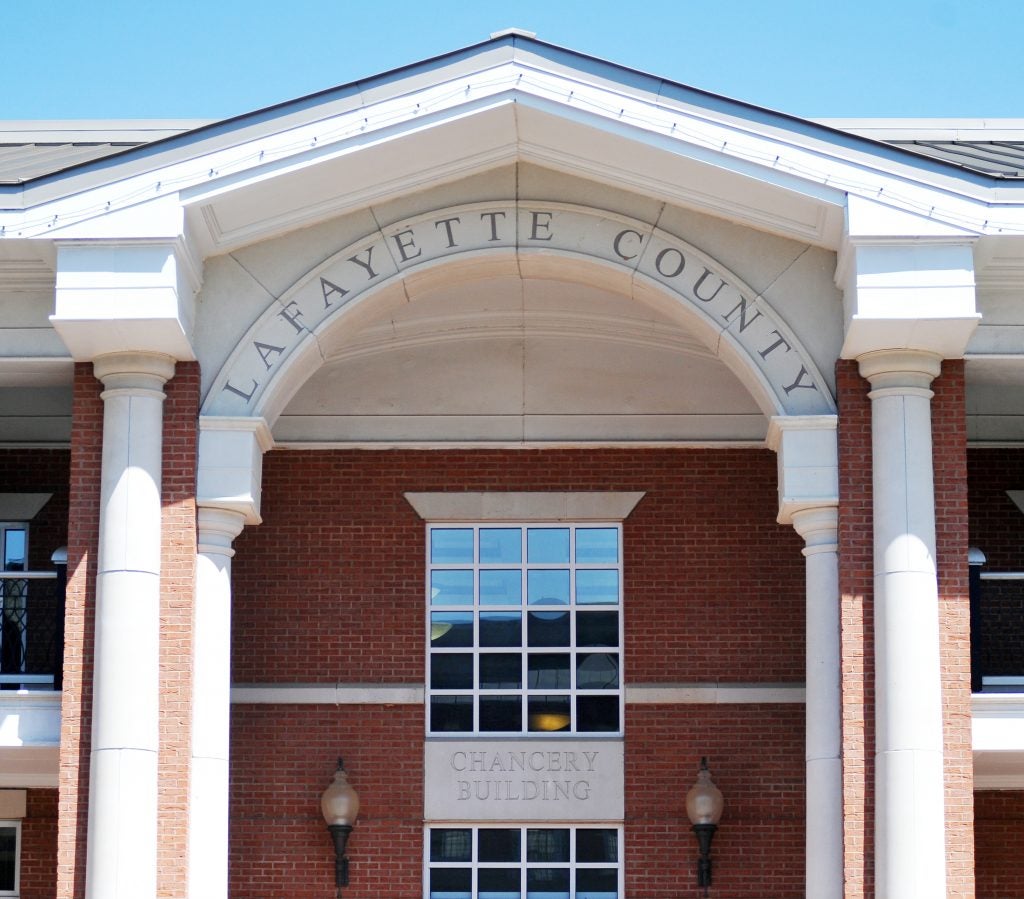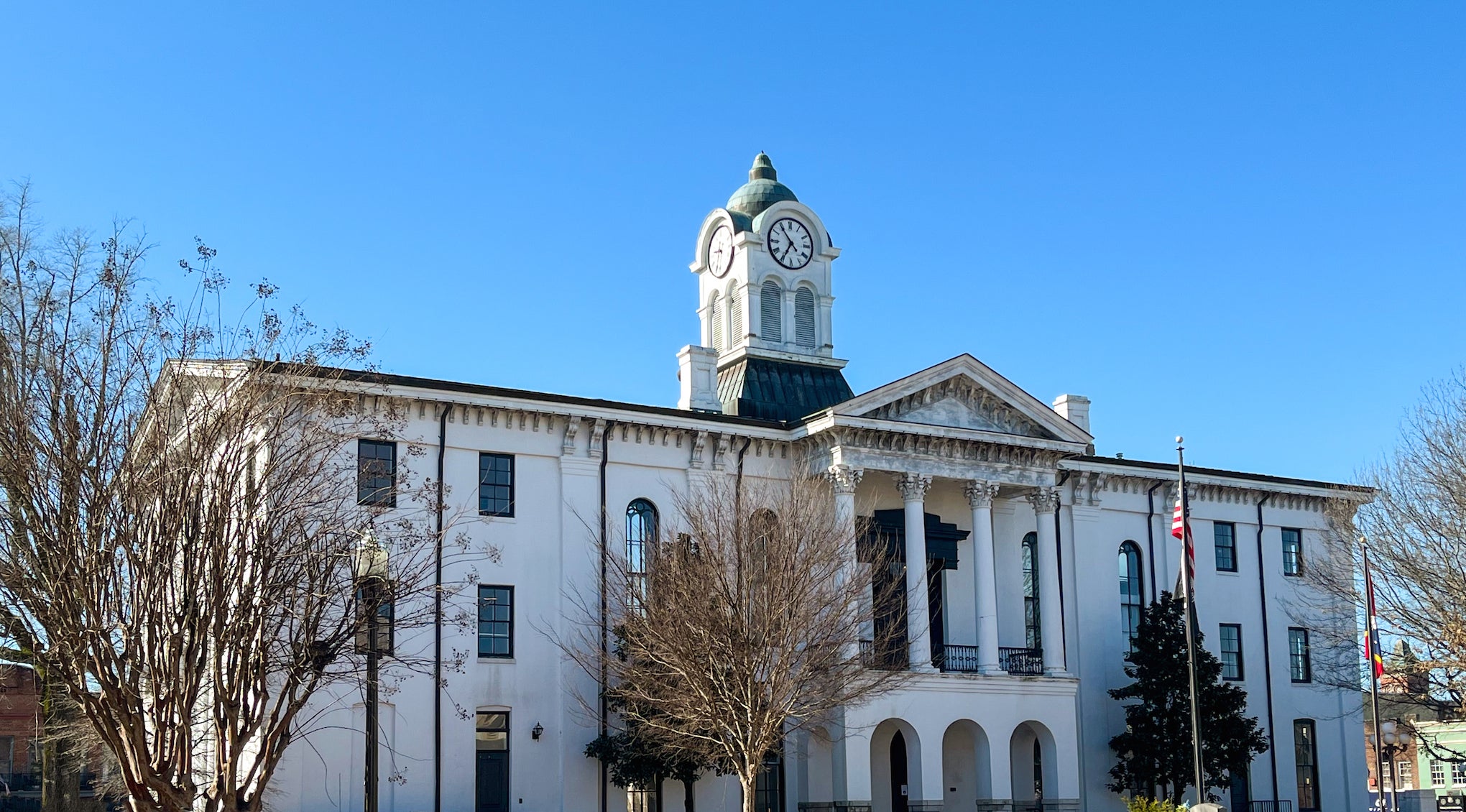Lynching memorial approved for Lafayette County Courthouse lawn
Published 12:04 pm Tuesday, January 19, 2021
After delaying a vote to discuss the proposed language for a memorial marker for seven African-American lynching victims in Lafayette County last month, the Board of Supervisors approved the revised language on Tuesday.
During their regular meeting, the Board approved the new text for the marker, which will be placed on the grounds of the Lafayette County Courthouse.
The vote was pushed back during a Dec. 8 meeting after District 3 Supervisor David Rikard said he had an issue regarding one of the names on the marker, Lawson Patton, and was not comfortable approving the language for the marker as it currently read. Rikard stated he did not want to “immortalize” a man who was allegedly caught “red-handed doing an extremely violent act.”
Patton, according to news articles dating back to 1908, was lynched by a mob led by then-Mississippi U.S. Senator W.V. Sullivan. The mob pulled Patton out of the Oxford jail and killed him. Patton was charged with murdering a white woman.
Rikard requested to meet with the the Lynching Memorialization in Lafayette County Committee, which worked in partnership with the Equal Justice Initiative to create the marker, to further discuss the matter and work to find a compromise. The two parties met via Zoom sometime between the Dec. 8 and Jan. 19 meetings.
During Tuesday’s meeting, Rikard made the motion to approve the revised language.
“It gave us a unique opportunity to just be able to have an open and honest conversation and through that, we were able to get to where we’re at today,” Rikard said. “I do appreciate the time; I know it’s been lengthy, I appreciate y’all’s patience. But, I think anything that is going to be memorialized forever and put on the Courthouse lawn deserves the time and the thought process of what it’s going to be.”
The proposed text discussed in the December meeting used the phrase “accused of the death of a white woman,” when referring to Patton, with which Rikard said he took issue. In the revised text approved on Tuesday, the phrase now reads “accused of the murder of a white woman.”
The Committee has worked with the Supervisors since 2019 to get a memorial plaque approved and placed on the grounds of the Courthouse. In September 2019, the Supervisors voted to move forward with process and send the language of the marker to the Mississippi Department of Archives and History.
During last year’s discussion, District 2 Supervisor Chad McLarty had an issue with some of the initial language on the marker, but he and the committee worked to resolve those issues.
The MDAH approved the current language and issued a permit for the marker, leaving only the Board of Supervisors’ final approval before the marker can be placed.
“The process is not always easy or comfortable and we genuinely appreciate the commitment of this Board to continue to engage in this process with us,” Lynching Memorial group member Lydia Koltai said to the Board.
Alonzo Hilliard and Reverend Duncan Gray joined Koltai in representing the Committee at Tuesday’s meeting.
The marker will be one of the final monuments to be placed on the Courthouse grounds. During the Dec. 8 meeting, the Board approved a moratorium on new monuments being installed.
One side of the memorial marker will be dedicated to “History of Lynching in America.”
The other side will be dedicated to “History of Lynching in Lafayette County.” That text will read:
“For decades, African American men were lynched by white mobs in Lafayette County. Most of these men were lynched because of interactions with white women which were characterized as “inappropriate” or “assaults.” These allegations against Black people were rarely subject to serious scrutiny. Instead, mobs frequently pulled lynching victims from jails, often facing little to no resistance from law enforcement officers who were legally required to protect them. On July 12, 1885, a white mob kidnapped Harris Tunstal from jail and hanged him behind the Methodist Episcopal Church near the Oxford square. On November 13, 1890, a mob interrupted Will McGregory’s trial in front of a magistrate and shot him to death before hanging his body near Orwood. A mob hanged an unknown Black man on September 2, 1891 after kidnapping him from the Oxford jail. Less than two years later, on July 30, 1893, a mob lynched Will Steen near Paris because of rumors that he was boasting about an affair with a white woman. On June 19, 1895, a white mob shot William Chandler and hanged him from a telegraph pole across from the depot in Abbeville. On September 8, 1908, Lawson Patton, a jail trustee accused of the murder of a white woman, was fatally shot in his cell and hanged on the grounds of the Lafayette County Courthouse. No one was ever held accountable for these lynchings.”
Elwood Higginbottom, who was lynched in Lafayette County in 1935 and has a memorial marker on the site where he was lynched near the Old Three-Way, is mentioned on the opposite side of the Courthouse Square plaque.






